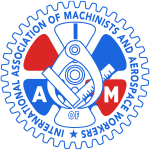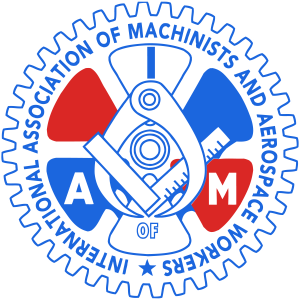The main differences between the first tentative agreement (August 23, 2024) and the new tentative agreement (January 30, 2025) include several additions and modifications that affect employee benefits, work rules, and job protections. Here’s a breakdown of the key differences:
New Additions in the January 30, 2025, Tentative Agreement:
- Paid Sick Leave Carryover:
- Employees can now carry over up to four (4) unused sick days per year, accumulating up to a maximum of 20 days.
- Banked sick days can only be used after exhausting current-year sick leave and require documentation for long-term illness.
- Unused banked sick leave will be paid out at 100% upon resignation or retirement.
- Expanded Bereavement Leave:
- Additional family members now covered: grandparents, grandchildren, domestic partners, half-siblings, step-siblings, step-parents, and step-children.
- This expansion increases the scope of paid bereavement leave (3 days per loss).
- Mechanical Work Planning Committee:
- A new labor-management committee will be formed to review CSXT’s mechanical work plans annually and as needed.
- This committee provides increased transparency regarding the sourcing and scheduling of locomotive and mechanical work.
- Company-Provided Lodging Standardization:
- CSXT must provide suitable lodging in secure, reputable hotels/motels with single occupancy rooms, private bathrooms, and modern accommodations.
- If an issue arises, local management and the IAM General Chairman will review complaints.
- Rule 24 (Transportation) Elimination:
- Employees who secure work elsewhere on the line will no longer receive free transportation to their new job location.
- This eliminates a previous travel benefit for laid-off employees.
Modified Provisions from the August 23, 2024, Agreement:
- 4-Day Workweek Rules for Roadway Mechanics:
- The same non-routine repair exceptions remain, but now there are clearer limitations on when a mechanic must work a rest day without overtime.
- If a mechanic works beyond three (3) times per month or 20 times per year, overtime will be paid.
- Advance notice for schedule changes must now be at least 5 days, or the first day of the change will be paid at the overtime rate.
- Stronger Language on Machinist Work Protection:
- While the original agreement documented the machinists’ involvement in daily inspections, the new agreement clarifies procedures if a facility reopens or staffing increases.
- IAM, CSXT’s Highest Designated Officer (HDO), and Mechanical Department representatives must meet before changes take effect.
- Stronger Cost Controls in Health Plan:
- Expanded utilization management rules now apply to four additional drug categories beyond specialty drugs.
- The reference-based pricing program for out-of-network providers is now explicitly mentioned.
Key Takeaways:
- New Benefits for Employees: Sick pay rollover, expanded bereavement leave, and improved lodging standards.
- Increased IAM Oversight: A formal work planning committee and stronger job protection language for machinists.
- More Defined Overtime Rules: Clarifies when rest-day work for mechanics qualifies for overtime.
- Reduced CSXT Obligation: Eliminates the transportation benefit for laid-off employees.
This new agreement builds upon the first agreement by adding more worker protections and benefits while refining work rule enforcement. However, CSXT gains more control over transportation benefits and increased cost management measures in healthcare.
Potential Interpretations:
- IAM’s (Machinists’) Interpretation – Stronger Job Protections
- Machinists should retain their existing scope of work at service centers.
- If CSXT expands operations or reopens a shop, IAM must be consulted first.
- This prevents CSXT from unilaterally shifting work away from machinists (e.g., to other crafts or contractors).
- The agreement formalizes IAM’s role, potentially limiting CSXT’s ability to classify machinist work as “incidental.”
IAM’s Concern:
- CSXT may try to argue that “current practices” allow for work-sharing with other crafts.
- CSXT’s Interpretation – Flexibility to Maintain the Status Quo
- CSXT is not required to change existing work assignments.
- The language does NOT explicitly prevent CSXT from reassigning machinist duties unless an operational change occurs.
- Outlying service centers and LST work are exempt, meaning CSXT may still shift work at smaller facilities.
- No new positions are automatically required at reopened locations.
CSXT’s Potential Move:
- CSXT could argue that the agreement merely documents existing conditions, allowing it to continue assigning some machinist duties to other crafts if it was already doing so.
Strategic Implications for IAM
- This agreement provides a formal mechanism to challenge changes in machinist work assignments.
- If CSXT increases staffing at a major service center, IAM can argue for additional machinist positions.
- IAM must closely monitor whether CSXT attempts to expand “simple task” and “incidental work” exceptions to reassign machinist duties.
Conclusion
🔹 For IAM: This agreement strengthens machinists’ position by requiring CSXT to engage in discussions before shifting work at major service centers.
🔹 For CSXT: The language still allows some flexibility to maintain the status quo and could be used to avoid adding machinists unless required by operational changes.
🔹 Biggest Gray Area: What constitutes a “significant operational change”—IAM and CSXT will likely interpret this differently.
To enforce this agreement in favor of machinists, IAM will need to track staffing changes at service centers closely and push for additional positions whenever CSXT expands work at those locations.






